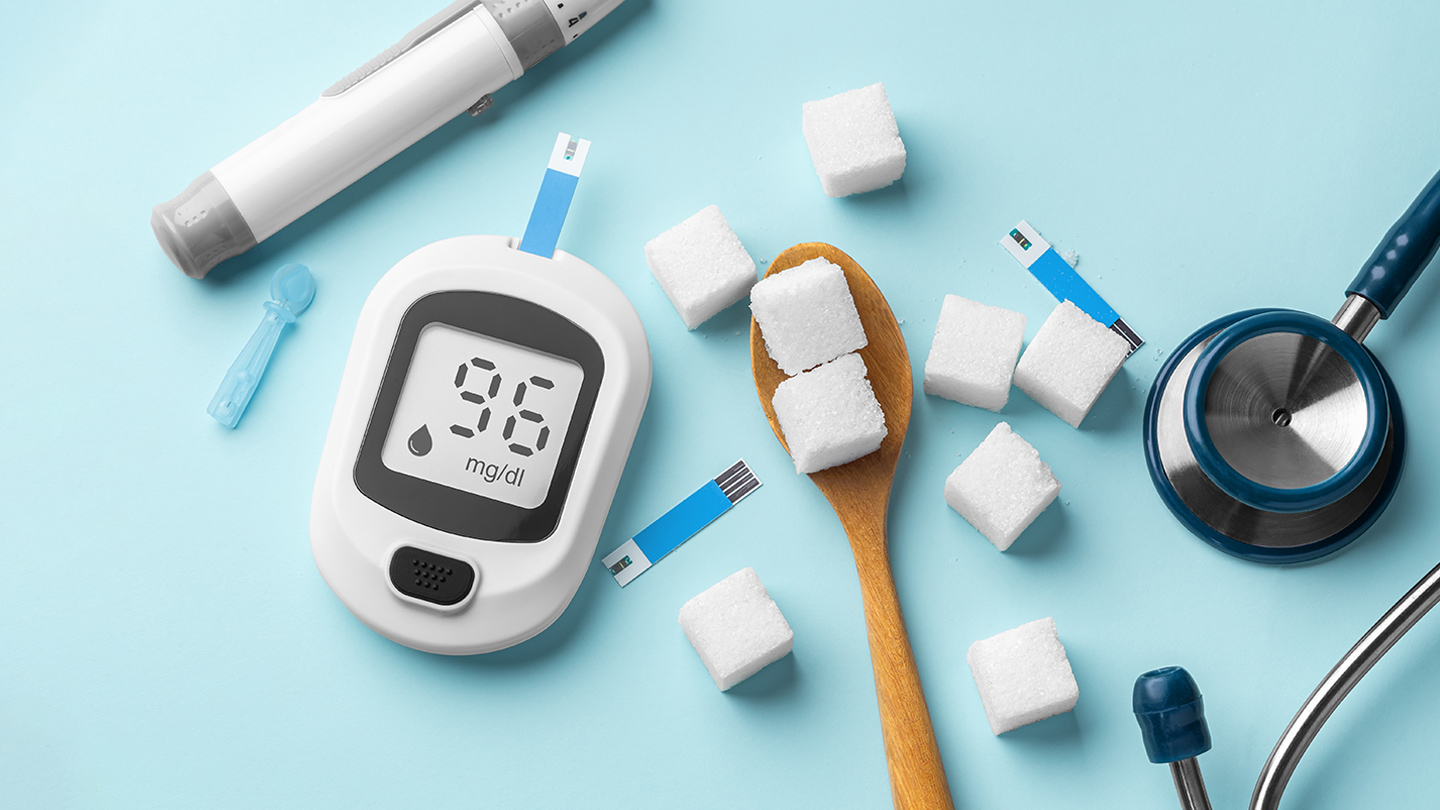Medical
Blood Sugar Tests Alone Can Be Misleading, Here’s How to Close the the Insulin–Glucose Gap
Routine blood sugar tests don’t tell the full story. Learn why insulin resistance can hide behind ‘normal’ results and the symptoms you should never ignore.

Conventional blood glucose tests like— fasting glucose, HbA₁c, or a spot finger-prick, offer only a snapshot of your current or average glycaemic status. These blood glucose tests often fail to capture fluctuations, such as nocturnal hypoglycaemia or early-morning spikes (the dawn phenomenon). Moreover, capillary finger-prick tests depend on user technique and can be inaccurate due to human errors like using expired strips or not washing hands.
This article is especially relevant for those who are pre-diabetic, at risk of insulin resistance, or experiencing unexplained symptoms despite normal test results. Even if you haven’t been diagnosed with diabetes, understanding the limitations of sugar tests and the subtle mismatch with insulin function can help you detect problems early and protect long-term metabolic health.
Related Story: Managing Diabetes Naturally
Insulin vs Sugar Tests: Where the mismatch lies
Insulin and glucose levels are interconnected, but standard glucose tests miss the nuances of insulin resistance and secretion. While indices such as HOMA-IR (Homeostatic Model Assessment of Insulin Resistance) and QUICKI (Quantitative Insulin Sensitivity Check Index) are widely used in research and sometimes in clinics, they come with several limitations:
-
Population variability: According to the National Library of Medicine, these models were initially developed and validated in predominantly Caucasian populations. Their accuracy decreases when applied to ethnically diverse groups, as insulin dynamics differ across Asian, African, and Hispanic populations. For example, South Asians often develop insulin resistance at lower BMI thresholds than Europeans, leading to underestimation of risk.
-
Sex and age differences:Women, particularly those with hormonal conditions like PCOS, may show abnormal insulin responses that aren’t fully captured by fasting insulin–glucose ratios. Similarly, age-related changes in beta-cell function can distort these surrogate measures.
-
Reliance on fasting state:These indices depend on a single fasting glucose and insulin reading. They don’t account for post-meal dynamics, which are critical in revealing early insulin resistance. Someone may have normal fasting values but still show excessive insulin spikes after eating.
Dr. Saptarishi Bhattacharya, Senior Consultant, Endocrinology, Indraprastha Apollo Hospital, New Delhi notes: “Fasting plasma glucose is important, but for elderly patients values up to 120–130 mg/dl may still be considered acceptable and a two-hour post-meal plasma glucose test is crucial because it reflects how your body handles sugar in real life, not just in the fasting state.”
-
Lack of standardised insulin assays: Insulin measurement itself lacks global standardisation. Different labs use different assays, which means HOMA-IR or QUICKI values may not be comparable across studies or clinics.
-
Reduced sensitivity in extremes: At very high or very low levels of glucose or insulin, these indices become mathematically less reliable, often overestimating or underestimating insulin sensitivity (2015, Indian Journal of Endocrinology and Metabolism).
Related Story: Keep Diabetes Under Check: How To Stop Diabetes Before It Starts
What Should You Do?
Employ advanced glycaemic monitoring tools
-
Continuous Glucose Monitors (CGMs) provide real-time tracking, detect patterns like the dawn phenomenon or nocturnal lows, and deliver alarms to avert hypo- or hyper-glycaemia.
-
Evaluate Time in Range (TIR): The proportion of time your glucose remains within your target, as a more dynamic metric than HbA₁c alone.
Screen for insulin resistance more comprehensively
-
If glucose appears normal but symptoms persist, consider tests beyond glucose like fasting insulin, OGTT (Oral Glucose Tolerance Test), or insulin sensitivity indices, recognising each has limitations and should be interpreted by a clinician.
Track patterns, not just points
-
Maintain a detailed log: Time of testing, food, exercise, symptoms, especially if relying on finger-pricks, to catch irregular trends missed by isolated measurements.
Related Story: 5 Prediabetes Symptoms You Shouldn’t Ignore
Hidden organ damage explained by Dr. Bhattacharya
-
Kidney health: “Creatinine above 1.2–1.5 mg/dl may indicate early kidney damage; urine microalbumin tests can detect this even earlier,”.
-
Cholesterol: “LDL cholesterol should ideally stay under 70 mg/dl in diabetes, and cholesterol medicines are just short-term fixes”.
-
Liver: “Diabetes can silently damage the liver. Rising SGOT (Serum Glutamic-Oxaloacetic Transaminase) and SGPT (a blood test that measures the levels of an enzyme primarily found in the liver) values or a fatty liver on ultrasound should never be ignored.”
Even if the sugar test is “normal”, don’t ignore these symptoms
Low blood sugar episodes or early-stage insulin dysfunction can masquerade:
-
Classic hypoglycaemia signs, such as trembling, headache, cold sweats, even when fasting or HbA₁c appear within normal range are red flags.
“For most patients, keeping HbA1c under 7 per cent is ideal, but in the elderly or those with long-standing diabetes, even 7.5 - 8 per cent may be acceptable to avoid dangerous hypoglycaemia,” notes Dr. Bhattacharya.
-
High morning readings may actually stem from overnight hypoglycaemia and spike (Somogyi rebound) rather than inadequate evening insulin.
-
Symptoms like persistent fatigue, brain fog, frequent urination, thirst, or weight loss, despite “normal” glucose, warrant investigation; they may herald pre-diabetes or undiagnosed diabetes.
Related Story: Could You Have Diabetes And Not Know?
Relying solely on static blood sugar tests risks missing dynamic glucose-insulin interactions or early insulin resistance. The mismatch arises because glucose tests don’t capture insulin patterns, and surrogate indices have significant methodological limitations. Always consult a healthcare professional to navigate the complexities of glucose health.
Regular health checks are essential for everyone, but they are particularly important for individuals who are at risk of or already have (condition name). Taking regular health checks can help detect (condition name) at an early stage when it is easier to manage and treat. With the UR.Life HRA, we help you to invest in your well-being through seamless interventions and targeted medical treatments. Our holistic wellness approach caters to all aspects of your well-being. We ensure that you can bring your whole self to work.
With our medical professionals by your side, routine health check-ups will never be an issue. Advanced laboratory technologies back UR.Life’s Occupational Health Centers (OHC), and with highly qualified experts/technicians, we’re committed to delivering trusted and quality recommendations, modifications and advice to you.
EXPLORE MORE
A sprain isn’t “just a sprain.” Here’s what your ankles wish you knew.
Your body whispers before it screams. Here are the early heart disease warning signs most people overlook until it’s too late.
Baldness isn’t just about ageing; it’s a complex condition influenced by biology, habits, and health. Understanding it is the first step toward managing it.
Breast cancer before 40 is rare, but not impossible. Know these warning signs so you can spot them well in time.







.jpg)


